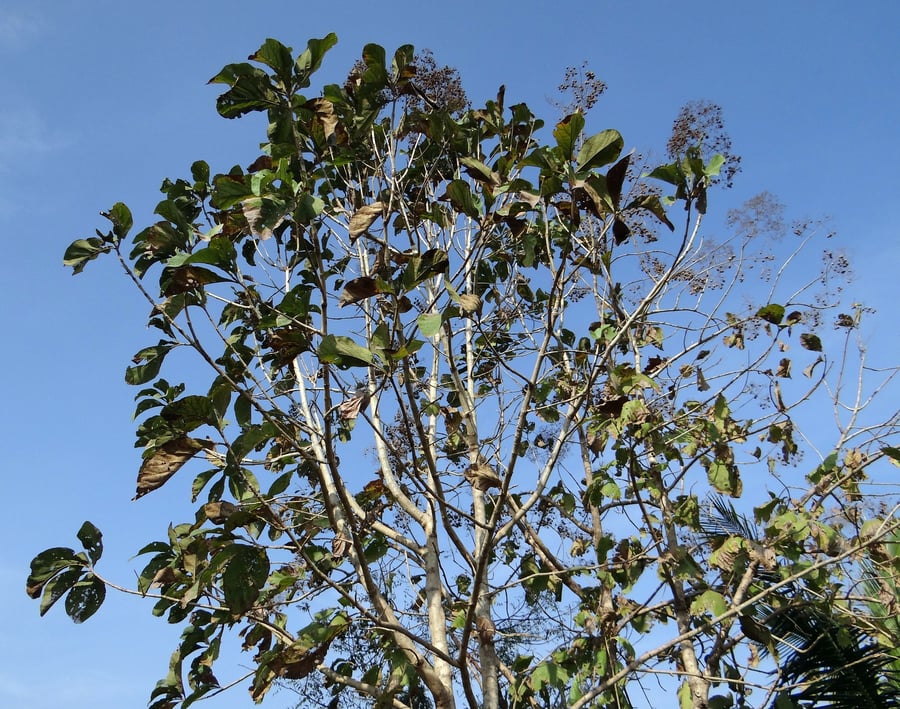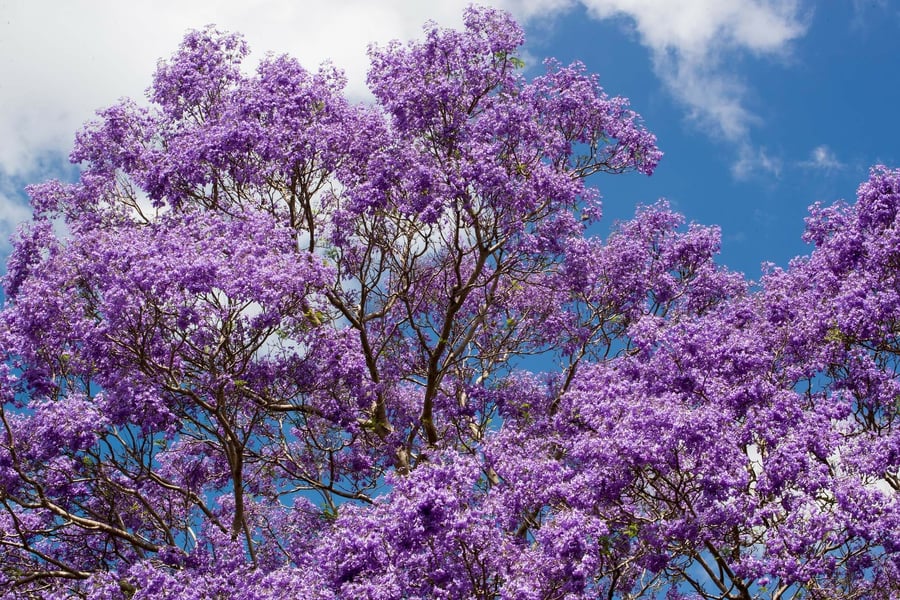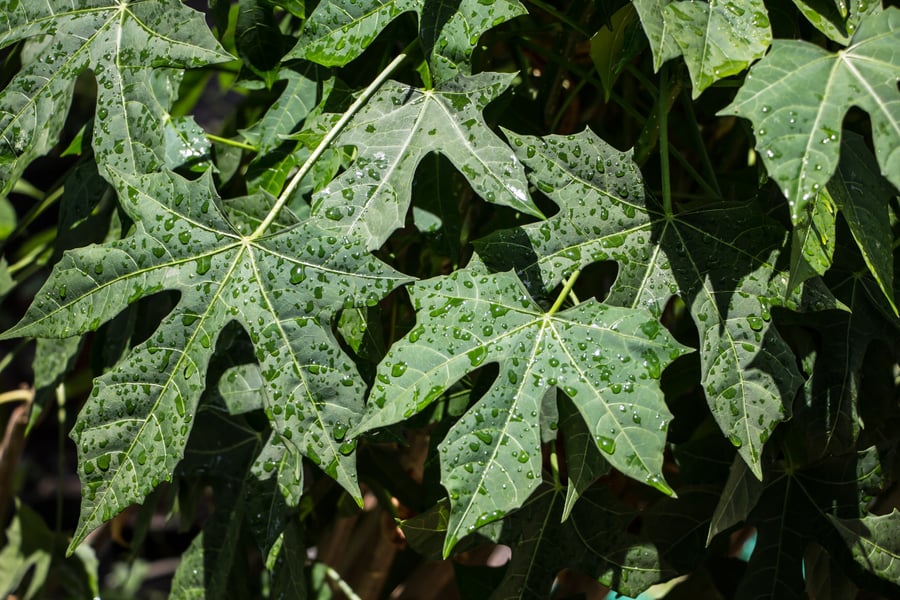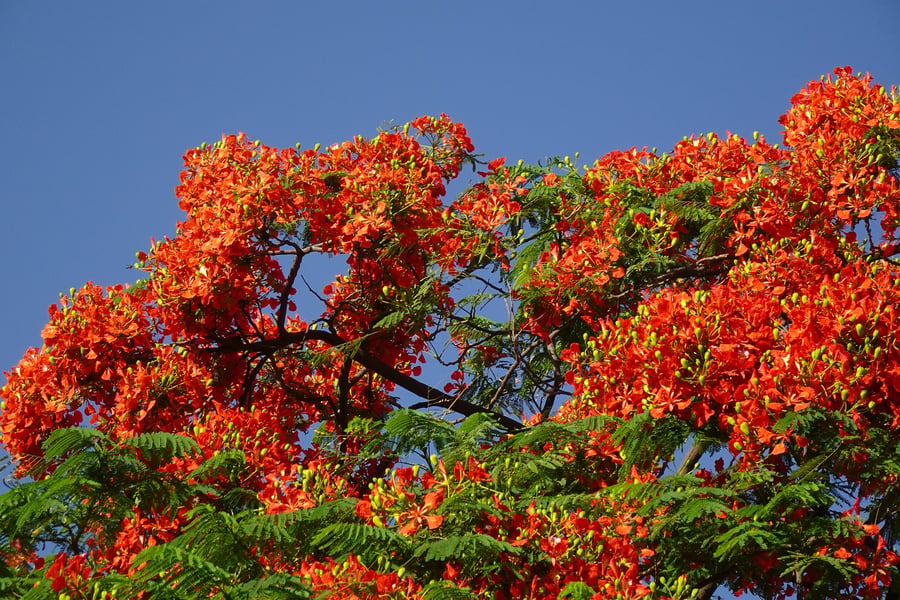From Teak to Flamboyant. Discover the new species we have planted in 2021
Mar 15, 2022 | written by: Lara Zambonelli
Jacaranda copaia, Teak, Delonix regia and Chaya. Melodious names that conceal surprising properties: today, we invite you to discover four of the new species we’ve integrated into our agroforestry systems in the past year.
Before we continue, don't worry.
“Agroforestry system” is just a difficult term to describe a simple concept: planting trees of different species (both forestry trees and fruit trees) on agricultural land. You’ll find an in-depth guide here. But while not all trees have the majesty of the Baobab, the beauty of the Markhamia, or the belligerence of the Dynamite Tree, each species has its own role to play in the balance of the ecosystem.
Teak - Tectona grandis

Teak - Tectona grandis
You know how sometimes members of the same family couldn’t be more different? Well, Teak is part of the botanical family Lamiaceae and is therefore a distant cousin of mint, rosemary, basil and oregano. Except that it can reach a height of 45 metres and a circumference of 2 metres. Originally from Southeast Asia, Teak was called “iron wood” by the Chinese, as its wood has a very hard and durable grain. For centuries, these characteristics made it the perfect material for building boats. Just think: in Oman, the wreck of a Teak ship was found dating back to the Harappa civilisation (c. 3300–1900 BC)! [1] [2] Intercropped with other species in our projects, its large foliage becomes very useful protection, providing shade for crops that suffer from direct exposure to sunlight.
Pavito - Jacaranda copaia

Pavito - Jacaranda copaia
Pioneer is a word with military origins. It meant the soldiers who were the first to clear the way for their comrades, often risking their own safety. Pavito is like that: a courageous tree that serves the community with its hardiness, settling first in new and not particularly fertile environments. Often used in agroforestry systems as a shading species, Pavito is also employed for medicinal purposes. For example, the decoction obtained from its leaves is an effective remedy for relieving fever [3]. Known primarily for its strength, this species is also strikingly beautiful: the bloom of its blue-purple flowers is enough to take anyone’s breath away.
Chaya - Cnidoscolus aconitifolius

Chaya - Cnidoscolus aconitifolius
If you’re trying to pronounce Chaya's scientific name, save your breath: it’s practically impossible. Instead, you can call it the “spinach tree”, as it’s nicknamed in many languages. Its huge leaves (the size of an adult’s hand) are cooked and eaten like a vegetable. They're rich in protein, calcium, iron and carotene [4]. What’s more, dry Chaya leaves can be used as fodder for animals, while the adult trees are perfect for providing shade for crops or marking out their boundaries to protect them from weather conditions. Native to Mexico, Chaya is now planted throughout South America, and many are trying to reintroduce it into people’s daily diet given its numerous beneficial properties [5].
Flamboyant - Delonix regia

Flamboyant - Delonix regia
If your friends had to choose just one adjective to describe you, what would it be? I bet you wouldn’t mind if it was “flamboyant”! Well, that’s what people commonly call Delonix regia, a majestic tree native to Madagascar. Its almost horizontal branches combined with its spectacular red-orange flowers make the Flamboyant look like a flame flickering in the landscape. This species also has many agroforestry uses: it helps to counteract soil erosion, enriches the soil thanks to its nitrogen-fixing properties, and offers shade to neighbouring crops [6].
Want to plant your tree, give it a name, and start following its incredible story? You can do so here.
Sources
[1] https://www.jstor.org/stable/24909139
[2] https://nraa.gov.om/wp-content/uploads/2020/11/Omani_Seafaring_Identity_before_the_Earl-1.pdf
[3] http://tropical.theferns.info/viewtropical.php?id=Jacaranda+copaia
[4] http://tropical.theferns.info/viewtropical.php?id=Delonix+regia
[5] https://books.google.it/books?id=6jrlyOPfr24C&redir_esc=y
[6] https://miraclesinaction.org/wp-content/uploads/2012/06/Chaya_broch_eng_r2.pdf

